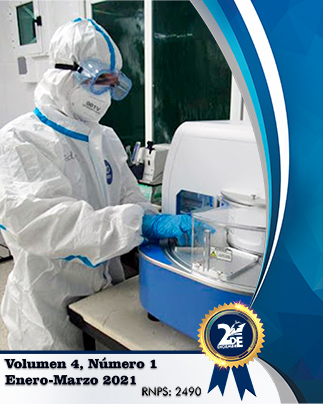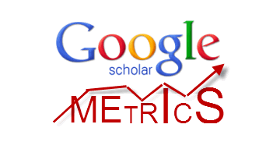Stories, poems and riddles for early childhood oral health promotion
Keywords:
Oral Medicine, Health Promotion, Education, Audiovisual Aids, Poetry, ChildAbstract
Introduction: Oral health education is a necessary pillar for the correct development of teeth during early childhood. Children's stories offer advantages for learning in children.
Aim: to make and validate a book of children's stories and poems for the promotion of oral health in early childhood.
Method: a book of poems, poems and riddles was prepared. For the validation of the book as a health promotion method, 44 children were selected from the Antonio Fernández León Resource and Support Center, with prior informed consent of their parents.
Results: the study was mainly represented by the female sex (59 %). The 5-6 years age group predominated, with a total of 31 children (70.5 %). In the initial stage, 81.8 % of the children presented inadequate knowledge before reading the book. After interaction with the book, 90.9 % improved their oral health culture.
Conclusions: children's stories, poems and riddles are useful for the promotion of oral health and prevention of dental caries. Educational and outreach plans for early childhood are methods used in the prevention of oral diseases.
Downloads
References
1.Organización Mundial de la Salud. Promoción de la salud : glosario [Internet]. Ginebra. OMS. 1998 [citado 22 Mar 2021]. Disponible en: https://apps.who.int/iris/handle/10665/67246
2.UNESCO. La atención y educación de la primera infancia. [Internet]. Buenos Aires. UNESCO. 2019 [citado 22 Mar 2021]. Disponible en: https://es.unesco.org/themes/atencion-educacion-primera-infancia
3.UNESCO. La atención y educación de la primera infancia, cuna de la cohesión social. [Internet]. UNESCO. 2018 [citado 22 Mar de 2021]. Disponible en: https://es.unesco.org/news/atencion-y-educacion-primera-infancia-cuna-cohesion-social
4.Yin W, Yang Y-M, Chen H, Li X, Wang Z, Cheng L, et al. Oral health status in Sichuan Province: findings from the oral health survey of Sichuan, 2015-2016. Int J Oral Sci [Internet]. 2017[citado 22 Mar 2021];9(1):10-5.Disponible en: https://www.nature.com/articles/ijos20176.pdf
5.Bravo Escudero MC, Bernabé Moyano MA, Gálvez García J, Jiménez Escalante F, Márquez Gálvez MG. Programa de promoción de la salud bucal. Propuesta didáctica: aprende a sonreír.[Internet]. España: Junta de Andalucía. Consejería de igualdad, salud y políticas sociales. Consejería de Educación, Cultura y Deporte; 2013[citado 22 Mar 2021]. 189p. Disponible en: https://www.juntadeandalucia.es/export/drupaljda/salud_5af95868c1da5_propuesta_didactica_completa.pdf
6.Cervantes S, Sucari W, Padilla T. Programa educativo sobre prevención en salud bucal en niños menores de cinco años. Revista Innova Educación [Internet]. 2020[citado 22 Mar 2021];2(2):318-29. Disponible en: https://revistainnovaeducacion.com/index.php/rie/article/view/81/168
7.Juana Cardozo B, Bessone G, Rita Pérez S, Vaculik PA, Griselda Sanz E. Evaluación del estado de Salud Bucal de niños en 4 y 5 años que asisten al Centro de Desarrollo Infantil MitaiRoga N° V, de la ciudad de Corrientes Capita. Revista Digital Founne[Internet]. 2017[citado 22 Mar 2021]; 1(1):[aprox. 8 p.]. Disponible en: https://core.ac.uk/download/pdf/230853967.pdf
8.Escudero E. Programa educativo “Sonrisa sana y feliz” en el nivel de conocimiento sobre salud bucal en los estudiantes de la Institución Educativa N° 7237 Perú Villadolid de Villa el Salvador. Perú: Universidad César Vallejo; 2017.[citado 22 Mar de 2021]. Disponible en: https://repositorio.ucv.edu.pe/handle/20.500.12692/33186?locale-attribute=es
9.Hernando LM, Zanotti A, Evjanián G, Visvisián C. Educación para Salud bucal en personas con discapacidad visual. Reflexión sobre las prácticas extensionistas. Argentina; 2011 [citado 22 Mar 2021]. [aprox. 11p.]. Disponible en: https://www.unl.edu.ar/iberoextension/dvd/archivos/ponencias/mesa3/educacion-para-salud-bucal-e.pdf
10.Janampa Cruz I, Mendivil Trelles de Peña LG. Cuento Infantil: Influencia en la Competencia Comunicativa en Niños de Tres a Cinco Años [Internet]. Perú: Pontificia Universidad Católica del Perú; 2018 [citado 22 Mar 2021]. Disponible en: http://tesis.pucp.edu.pe/repositorio/bitstream/handle/20.500.12404/16691/Janampa_Cruz_Cuento_infantil_influencia1.pdf?sequence=1&isAllowed=y
11.FleitesDid TY, Gispert Abreu EA, Quintero Fleites EJ, Castell-FloritSerrate P, Blanco Barbeito N. Factores del desarrollo de intersectorialidad para la promoción desalud bucodental en niños de preescolar. Medicent Electrón [Internet]. 2020 [citado 31Mar 2021];24(2): 320-336. Disponible en:http://scielo.sld.cu/scielo.php?script=sci_arttext&pid=S1029-30432020000200320
12.Flores-Alatorre JF, Caballero-García CR, Bonilla-Fernández P, Atrisco-Olivos R, Arenas-Monreal ML. Modelo operativo de promoción de la salud y prevención deenfermedades bucales en preescolares de Cuautla, Morelos-México. Mem. Inst. Investig. Cienc. Salud. [Internet]. 2018 [citado 31Mar 2021]; 17(1): 82-92. Disponible en: https://doi.org/10.18004/Mem.iics/1812-9528/2019.017(01)82-092
13.Rizzo-Rubio LM, Torres-Cadavid AM, Martínez-Delgado CM. Comparación de diferentes técnicas de cepilladopara la higiene bucal. Rev. CES Odont[Internet]. 2016 [citado 31Mar 2021]; 29(2): 52-64. Disponible en: https://revistas.ces.edu.co/index.php/odontologia/article/view/4100
Downloads
Published
How to Cite
Issue
Section
License
Authors who have publications with this journal agree to the following terms: authors retain their copyright and grant the journal the right of first publication of their work, which is simultaneously subject to the Creative Commons Attribution-NonCommercial 4.0 International License that allows third parties to share the work as long as the author and first publication in this journal are indicated, for non-commercial use. Authors may adopt other non-exclusive license agreements for distribution of the published version of the work (e.g., depositing it in an institutional telematic archive or publishing it in a monographic volume) as long as the initial publication in this journal is indicated. Authors are allowed and encouraged to disseminate their work via the Internet (e.g., in institutional telematic archives, in their web page or in Pre-print servers) before and during the submission process, which can lead to interesting exchanges and increase citations of the published work. (See The Open Access Effect).







